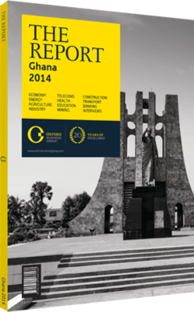Cementing its position in the market
As demand for utilities, housing and overall infrastructure in Ghana rises, new government projects and private developments require an ever-increasing supply of building materials, particularly cement. Local players are expanding production capacity while two new plants are set to begin operations in late 2014 and early 2015. Although challenges remain apparent, such as shipping costs and the rising incidence of cheap imports of Dangote’s Nigerian cement, which is undercutting local players, consumption patterns will drive demand for the foreseeable future.
New Capacity
The Ghanaian government has recently partnered with Ciments de l’Afrique to develop an $82.4m production facility in the Tema Metropolitan Area with a capacity of 1m tonnes per annum (tpa). As part of the negotiation, the government is required to acquire 10 ha of land and finalise all administrative items pertaining to the lease of a limestone quarry necessary for factory inputs. The plant is expected to become operational by the summer of 2015.
Current producer Western Diamond Cement (WACEM) is planning to launch an additional factory, also with a capacity of 1m tpa, following a $20.15m loan from Stanbic Bank. The new plant will be located in Egyam Bokro near Takoradi and production is set to begin in late 2014. WACEM already operates two associate companies in Ghana, Savanna Diamond Cement, located in the Northern Region, and Diamond Ghana, situated in the country’s Volta Region.
WACEM is one of three dominant cement players in the local market. The largest player, Ghacem, accounts for about 50% of the market share and is a joint venture between the Ghanaian government and Norcem of Norway. Norcem is the majority owner of Heidelberg Cement, which inaugurated a 1m-tpa mill in Tema in November 2012 and recently announced that it would add a 0.8m-tpa facility to its plant in Takoradi. WACEM’s two Diamond subsidiaries account for the rest of the market. Nigeria’s Dangote Group, however, entered the market in 2011 with a 1.5m-tpa terminal in Accra. Ghacem operates two production sites in Takoradi and Tema with capacities of 1.2m tpa and 2.2m tpa, respectively. Plans for an additional $30m, 800,000-tpa facility, known as Mill 5, suggest that the added capacity will come online to the Takoradi plant by the end of 2014, bringing total capacity for Ghacem to 4.4m tpa.
Prices
Cement prices remain high in Ghana, hovering between GHS16 ($6.10) per bag in mid-2013 and GHS24 ($9.15) in mid-2014, as a result of the cedi’s depreciation and high input costs, such as clinker imports. There is an inadequate supply of limestone and gypsum produced locally, making it necessary to import such materials from Europe and Asia. Costs are consequently passed down to the end users and squeeze margins across the industry.
Ghacem sources approximately 25% of raw materials locally, and the government has recently introduced targets for the joint-venture group and local producers to source up to 60% of raw materials from Ghana. Such capacity, however, may not exist according to Ghacem. George Dawson Amoah, strategic and corporate affairs manager for Ghacem, recently told Citi Business News, “I share the concern of the minister that we should move beyond the 25% raw material [threshold], but where is it available? Show us any deposit of limestone with appreciable quantity and quality, and we will go in for clinker production,” he said.
Import Concerns
Cheap, imported cement, which comes in at the seaports and is thus close to the end market, also affects local production rates and hurts competition. Local producers like Ghacem are appealing to the government to more strictly enforce import duties and quality control standards. The Tariffs and Advisory Board responded by opening an investigation into the importation of cheap cement in early 2014. Despite various challenges, the demand for low-income housing, high-end properties, new hotels and, most significantly, a range of major infrastructure projects that will be rolled out over the coming years illustrate a positive growth outlook for Ghana’s cement industry.
You have reached the limit of premium articles you can view for free.
Choose from the options below to purchase print or digital editions of our Reports. You can also purchase a website subscription giving you unlimited access to all of our Reports online for 12 months.
If you have already purchased this Report or have a website subscription, please login to continue.

